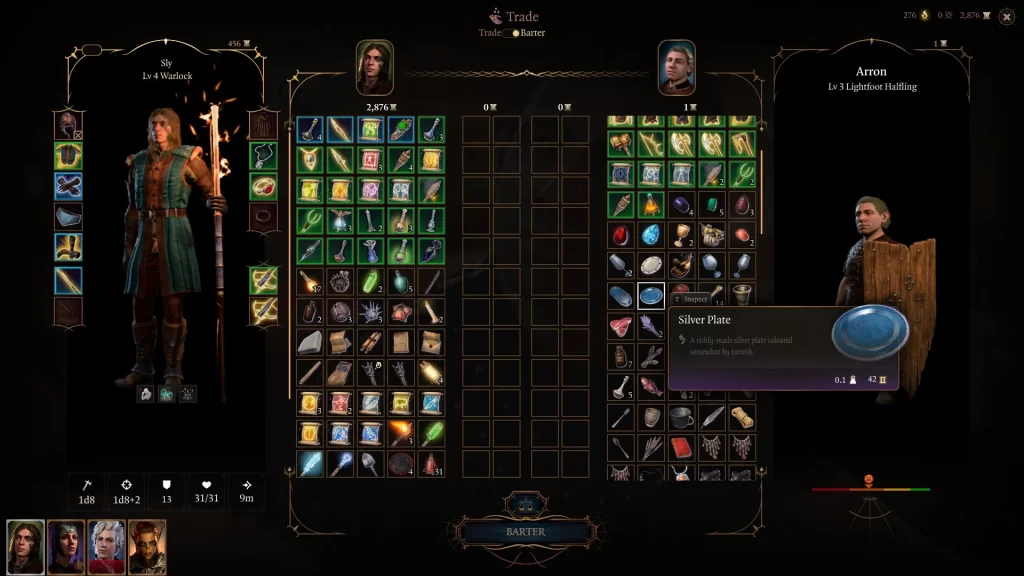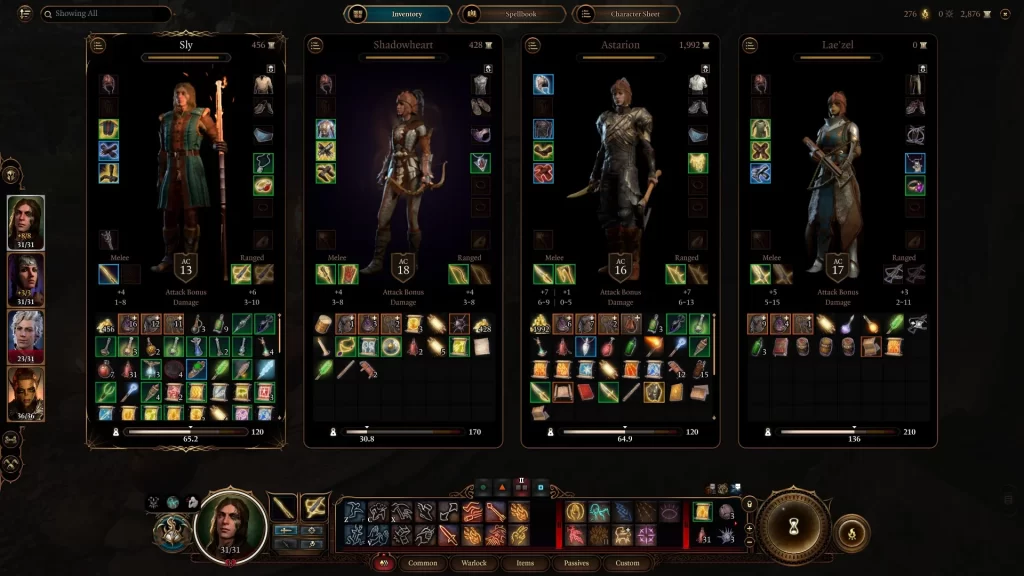Deciding what to sell in Baldur’s Gate 3 can be confusing when you’re not sure if certain items have a purpose. This is especially the case for items like ingots and gems. Since we know the last thing you want to do is sell them and need them for crafting later.
As our guide on the misinformation around workbenches explains, crafting isn’t a significant mechanic in Baldur’s Gate 3. So continue reading below for an idea of what items are safe to sell so you can make some money. You’ll definitely need it for when you see a nice new piece of gear to buy or even just some health potions.
What to Sell in Baldur’s Gate 3
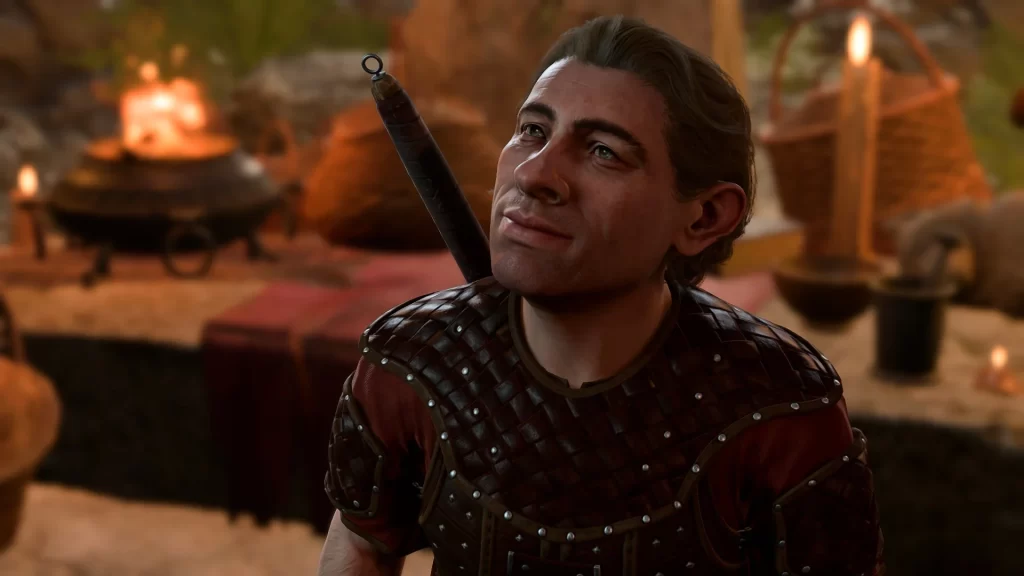
Don’t try to sell Halflings even though this screenshot is right under the headline about what to sell.
The first major town you’ll come across in Act 1 is the Druid Grove where you’ll get your first opportunity to sell some items. While it’s possible you can meet another trader or even barter with a random NPC mid-conversation, Arron is likely the first trader you’ll see.
By now you’re sure to have a bunch of extra loot from fighting enemies and maybe even some random objects you’ve gathered. It can be tempting to loot everything in your environment once you see the gold value on them. Even though you’re unlikely to ever get the full gold amount shown when inspecting an item.
Before diving into which items to sell and which not to, it’s worth discussing encumbrance in Baldur’s Gate 3. You’ll quickly notice that characters with higher strength can carry more items. While this can help with deciding who carries what, it’s not always a perfect balance. That’s why I wanted to mention one quick tip to help deal with encumbrance.
As someone who loves to loot anything worth money, I frequently store stuff in my camp. You can easily do this by right-clicking an item and then clicking on “Send to Camp”. Afterward, it’ll transfer to your Traveller’s Chest in camp. If you’re playing with friends, each player will have their own chest.
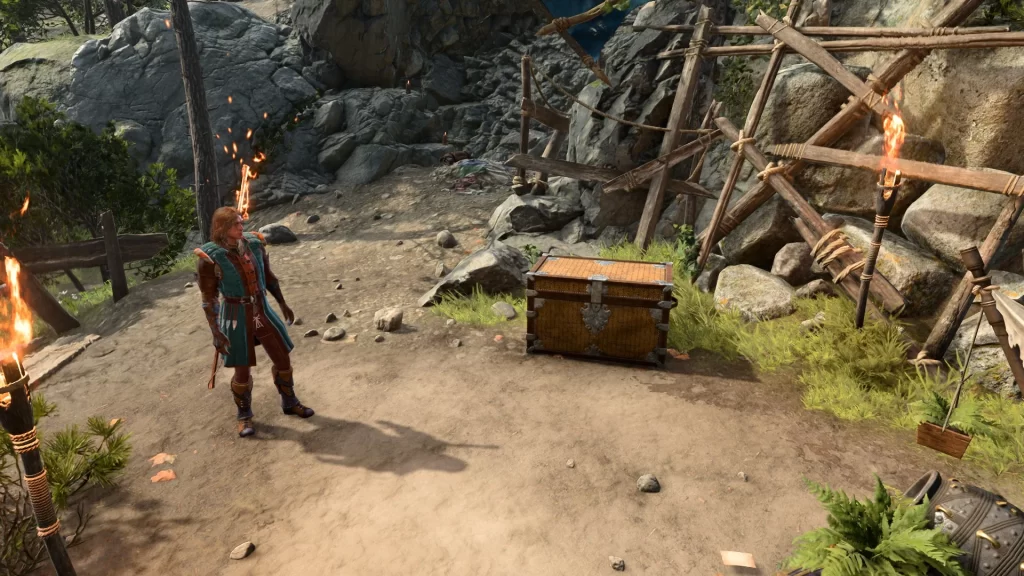
This is what the Traveller’s Chest in camp looks like. Even though it can be different colors when playing with others.
I tend to do this for items I won’t need immediately, stuff I plan to sell, and food especially. There’s almost no reason to keep food on your character since you don’t need to for long rests. Although, this can be deceiving at first if the game says you don’t have enough food for a long rest. Skip past that warning if you have enough in the Traveller’s Chest since you can take it from there.
Aside from food, you’ll find yourself overloaded with items if you don’t frequently make trips to areas with traders. This is why I don’t mind stashing a ton of heavy weapons and armor at the camp. And then pulling it all out when I’m next to a trader.
Items Safe to Sell
This section primarily covers items that are safe to sell. However, you may still want to keep certain items like extra equipment to gear up a new companion. While you will meet a few companions early in Act 1, there are still many more to come across and recruit.
- Extra weapons and armor from battle
- Old gear you no longer need
- Ingots (Bronze, Gold, Silver, etc.)
- Gems (Excluding Laculite and Fire Amber used in Alchemy)
- Miscellaneous items like cups, plates, paintings, etc.
- Jewelry without any benefits like a Bronze Necklace or Ruby Ring
- Spell scrolls (Even though they’re often worth holding onto)
- Books and Notes (Open every book at least once to check for quest updates or companion chatter)
- Clothing
- Rope (Sorry for those of you hoping it does something)
Items Not to Sell
While this section covers items not to sell, you’ll get a decent idea farther into your run for what you may not need. This will make it easier to decide if you want to sell something despite my recommendation below not to.
- Orange background items (Typically you can’t sell them anyway)
- Magical Items for Gale’s Quest
- Potions and Elixirs
- Weapon Coatings
- Special Arrows
- Scrolls of Revivify
- Food
- Keys
- Alchemy Ingredients
- Thieves Tools’ and Trap Disarm Toolkits (You’re more likely to consume them late-game)
- Infernal Iron
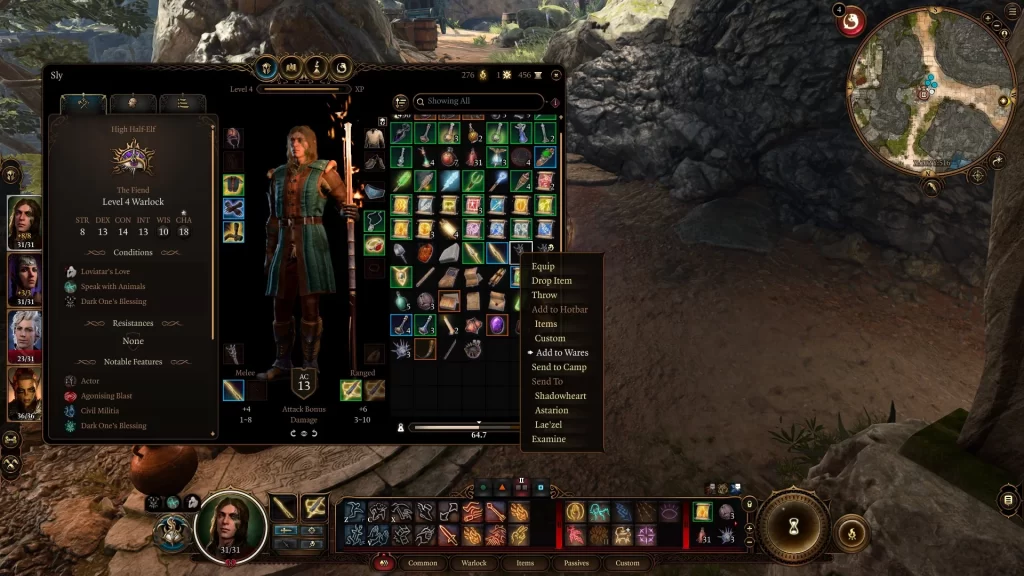
You can see the Add to Wares and Send to Camp options here in the drop-down menu. If Add to Wares isn’t there, you won’t be able to sell the item.
One good way to know if an item is important is to right-click it and then see if you can “Add to Wares”. This is a way to quickly sell items to a trader by swapping from Barter to Trade. But, this is also a method to see if an item is tradable since the option may not always be available. With that said, this isn’t a perfect trick.
Should I Sell Ingots in Baldur’s Gate 3?
You can sell ingots since they’re not used for any type of crafting system. Despite a Workbench once being in the game, it was removed and replaced with a simple system via your inventory. This is where you can combine certain items to make other ones. Ingots however are never used this way.
Is It Safe to Sell Books?
Books are safe to sell after opening them at least once. As mentioned in our guide, certain books can start quests, progress them, and even help solve puzzles all throughout the game. However, many of them are purely for lore if you don’t want to spend time reading them.
Should You Keep Gems?
There are several types of gems in Baldur’s Gate 3 that don’t have a purpose other than selling them for money. Unless the item description shows a purpose via Alchemy or won’t let you sell it, you can get rid of it. Make sure you also take advantage of the Attitude system to get more gold.
How Do You Make Money in Baldur’s Gate 3?
The best way to make money is by selling just about everything you can loot. This is why we recommend storing items in your camp so you can sell them at a later time. Otherwise, many quests can give a good chunk of gold as long as you accept the reward. Unless you’d prefer to go the route of pickpocketing instead.
Otherwise, that’s pretty much all there is to this Baldur’s Gate 3 guide on what to sell. I definitely became a bit of a hoarder during my first playthrough as I tried to learn what was worth keeping. Especially with a lot of rumors circulating about whether ingots are important or not.
- What is The Dark Urge in Baldur’s Gate 3
- 10 Best Baldur’s Gate 3 Tips and Tricks
- What is the Workbench

Jeff is a journalist with over 10 years of experience writing, streaming, and making content about video games. With an associate degree in journalism, he’s a sucker for RPGs, survival games, roguelikes, and more.

